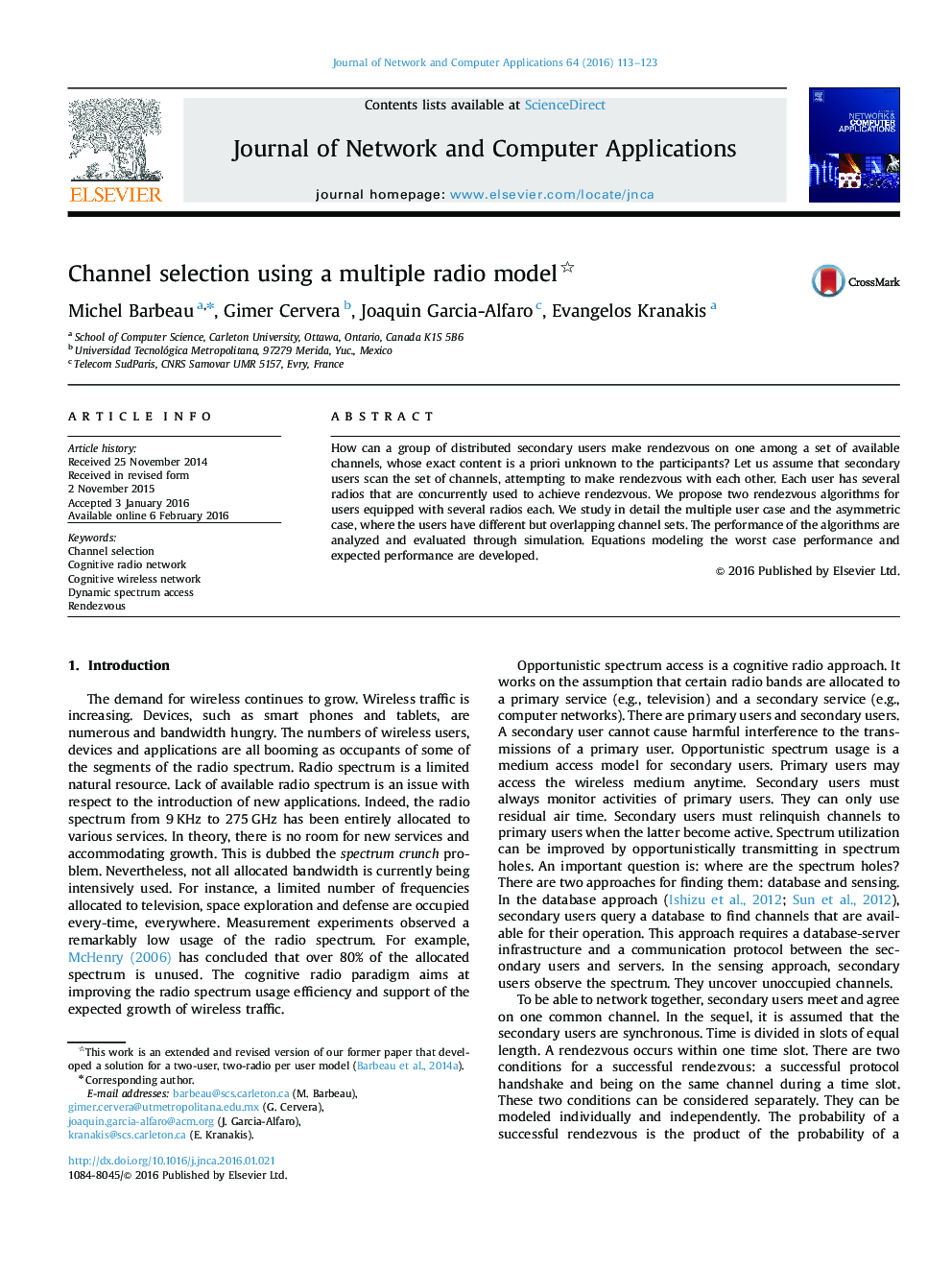| Article ID | Journal | Published Year | Pages | File Type |
|---|---|---|---|---|
| 459078 | Journal of Network and Computer Applications | 2016 | 11 Pages |
•We propose two rendezvous algorithms for users equipped with several radios.•We study in detail the multiple user case and the case where the users have different channel sets.•The performance of the algorithms are analyzed and evaluated through simulation.•Equations modeling the worst case performance and expected performance are developed.
How can a group of distributed secondary users make rendezvous on one among a set of available channels, whose exact content is a priori unknown to the participants? Let us assume that secondary users scan the set of channels, attempting to make rendezvous with each other. Each user has several radios that are concurrently used to achieve rendezvous. We propose two rendezvous algorithms for users equipped with several radios each. We study in detail the multiple user case and the asymmetric case, where the users have different but overlapping channel sets. The performance of the algorithms are analyzed and evaluated through simulation. Equations modeling the worst case performance and expected performance are developed.
Graphical abstractWith the 2k-point algorithm, each user randomly and independently selects a start channel. In the example, there are two users and each user has two radios (top part of the picture). Start channel of User 1 is 0. Start channel of User 2 is 2. One radio cyclically scans channels clockwise, while the other radio cyclically scans channels counter clockwise. Scanning is performed until rendezvous is achieved by the two users, that is they are tuned to the same channel for any radio pair, in this example first radio of User 1 and second radio of User 2 (bottom part of the picture). Rendezvous is made in channel 1.Figure optionsDownload full-size imageDownload as PowerPoint slide
